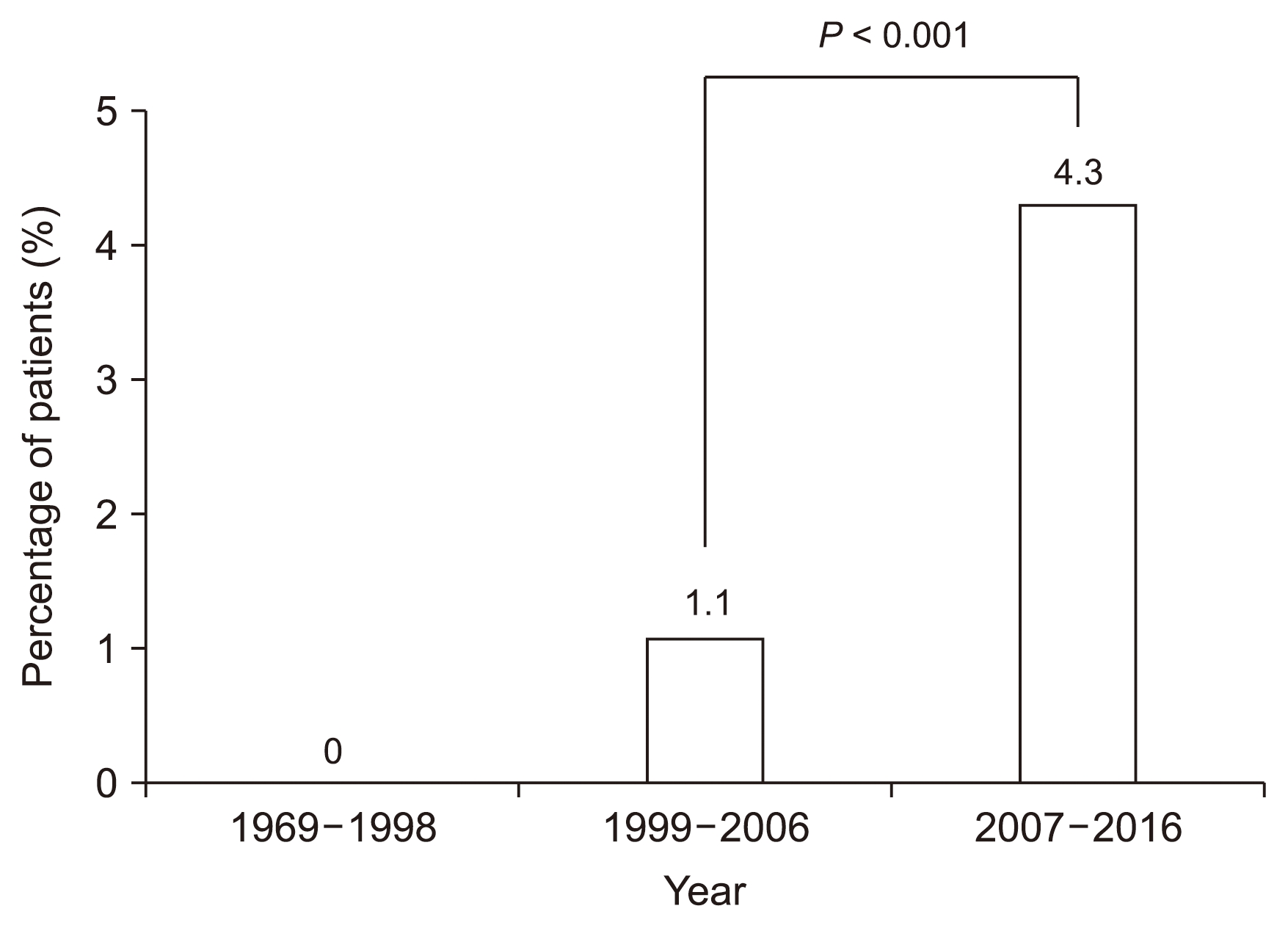1. Rama I, Grinyó JM. Malignancy after renal transplantation: the role of immunosuppression.
Nat Rev Nephrol 2010;6:511–519.


2. Cabello Benavente R, Quicios Dorado C, López Martin L, Simón Rodríguez C, Charry Gónima P, González Enguita C. The candidate for renal transplantation work up: medical, urological and oncological evaluation.
Arch Esp Urol 2011;64:441–460.

3. Lee RA, Gabardi S. Current trends in immunosuppressive therapies for renal transplant recipients.
Am J Health Syst Pharm 2012;69:1961–1975.


4. Vajdic CM, McDonald SP, McCredie MR, et al. Cancer incidence before and after kidney transplantation.
JAMA 2006;296:2823–2831.


5. Villeneuve PJ, Schaubel DE, Fenton SS, Shepherd FA, Jiang Y, Mao Y. Cancer incidence among Canadian kidney transplant recipients.
Am J Transplant 2007;7:941–948.


6. Ju MK, Joo DJ, Kim SJ, et al. Chronologically different incidences of post-transplant malignancies in renal transplant recipients: single center experience.
Transpl Int 2009;22:644–653.


7. Hwang JK, Moon IS, Kim JI. Malignancies after kidney transplantation: a 40-year single-center experience in Korea.
Transpl Int 2011;24:716–721.


8. Cheung CY, Lam MF, Chu KH, et al. Malignancies after kidney transplantation: Hong Kong renal registry.
Am J Transplant 2012;12:3039–3046.


9. Hall EC, Pfeiffer RM, Segev DL, Engels EA. Cumulative incidence of cancer after solid organ transplantation.
Cancer 2013;119:2300–2308.



10. Mosconi G, Centofanti F, Capelli I, et al. Incidence and prevalence of cancer in kidney transplantation waiting list patients: an Italian experience.
Int J Artif Organs 2013;36:335–340.


11. Kidney Disease: Improving Global Outcomes (KDIGO) Transplant Work Group. KDIGO clinical practice guideline for the care of kidney transplant recipients. Am J Transplant 2009;9(Suppl 3):S1–S155.
12. Knoll GA, Blydt-Hansen TD, Campbell P, et al. Canadian Society of Transplantation and Canadian Society of Nephrology commentary on the 2009 KDIGO clinical practice guideline for the care of kidney transplant recipients.
Am J Kidney Dis 2010;56:219–246.


13. Chadban SJ, Barraclough KA, Campbell SB, et al. Kidney Health Australia Caring for Australians with Renal Impairment (KHA-CARI). KHA-CARI guideline: KHA-CARI adaptation of the KDIGO Clinical Practice Guideline for the Care of Kidney Transplant Recipients.
Nephrology (Carlton) 2012;17:204–214.


14. Abramowicz D, Cochat P, Claas FH, et al. European Renal Best Practice Guideline on kidney donor and recipient evaluation and perioperative care.
Nephrol Dial Transplant 2015;30:1790–1797.


15. Rao PS, Merion RM, Ashby VB, Port FK, Wolfe RA, Kayler LK. Renal transplantation in elderly patients older than 70 years of age: results from the Scientific Registry of Transplant Recipients.
Transplantation 2007;83:1069–1074.


16. Huang E, Segev DL, Rabb H. Kidney transplantation in the elderly.
Semin Nephrol 2009;29:621–635.



17. Knoll GA. Kidney transplantation in the older adult.
Am J Kidney Dis 2013;61:790–797.


18. Berger NA, Savvides P, Koroukian SM, et al. Cancer in the elderly.
Trans Am Clin Climatol Assoc 2006;117:147–155.


19. Ministry of Health and Welfare, The Korea central cancer registry. Annual report of cancer statistics in Korea in 2014. Seoul: Ministry of Health and Welfare; 2014.
20. Kasiske BL, Cangro CB, Hariharan S, et al. American Society of Transplantation. The evaluation of renal transplantation candidates: clinical practice guidelines.
Am J Transplant 2001;1(Suppl 2):3–95.

21. Knoll G, Cockfield S, Blydt-Hansen T, et al. Kidney Transplant Working Group of the Canadian Society of Transplantation. Canadian Society of Transplantation: consensus guidelines on eligibility for kidney transplantation.
CMAJ 2005;173:S1–S25.



22. Campbell S, Pilmore H, Gracey D, Mulley W, Russell C, McTaggart S. KHA-CARI guideline: recipient assessment for transplantation.
Nephrology (Carlton) 2013;18:455–462.


23. Choi KS, Park EC, Shin HR, Kim CM, Oh DK. National cancer screening program in Korea. J Korean Assoc Cancer Prev 2004;9:116–122.
24. Kim HJ. Proposal for improving the outcomes of cancer treatment.
J Korean Med Assoc 2017;60:219–222.

25. Cho B, Lee CM. Current situation of national health screening systems in Korea.
J Korean Med Assoc 2011;54:666–669.

26. Shim BY. Cancer screening guidelines in Korea.
Korean J Med 2016;90:224–230.

27. Vajdic CM, van Leeuwen MT. Cancer incidence and risk factors after solid organ transplantation.
Int J Cancer 2009;125:1747–1754.


28. Engels EA, Pfeiffer RM, Fraumeni JF Jr, et al. Spectrum of cancer risk among US solid organ transplant recipients.
JAMA 2011;306:1891–1901.



29. Krynitz B, Edgren G, Lindelöf B, et al. Risk of skin cancer and other malignancies in kidney, liver, heart and lung transplant recipients 1970 to 2008--a Swedish population-based study.
Int J Cancer 2013;132:1429–1438.


30. Kwon SK, Han JH, Kim HY, et al. The incidences and characteristics of various cancers in patients on dialysis: a Korean nationwide study.
J Korean Med Sci 2019;34:e176



31. Park S, Lee S, Kim Y, et al. Risk of cancer in pre-dialysis chronic kidney disease: A nationwide population-based study with a matched control group.
Kidney Res Clin Pract 2019;38:60–70.



32. Yoo KD, Lee JP, Lee SM, et al. Cancer in Korean patients with end-stage renal disease: a 7-year follow-up.
PLoS One 2017;12:e0178649



33. Ahn HS, Kim HJ, Welch HG. Korea’s thyroid-cancer “epidemic”--screening and overdiagnosis.
N Engl J Med 2014;371:1765–1767.


34. Martel CL, Lara PN. Renal cell carcinoma: current status and future directions.
Crit Rev Oncol Hematol 2003;45:177–190.


35. Bhatnagar R, Alexiev BA. Renal-cell carcinomas in end-stage kidneys: a clinicopathological study with emphasis on clear-cell papillary renal-cell carcinoma and acquired cystic kidney disease-associated carcinoma.
Int J Surg Pathol 2012;20:19–28.



36. Carling T, Udelsman R. Thyroid cancer.
Annu Rev Med 2014;65:125–137.


37. Hellström V, Lorant T, Döhler B, Tufveson G, Enblad G. High posttransplant cancer incidence in renal transplanted patients with pretransplant cancer.
Transplantation 2017;101:1295–1302.


38. Viecelli AK, Lim WH, Macaskill P, et al. Cancer-specific and all-cause mortality in kidney transplant recipients with and without previous cancer.
Transplantation 2015;99:2586–2592.


39. Li WH, Chen YJ, Tseng WC, et al. Malignancies after renal transplantation in Taiwan: a nationwide population-based study.
Nephrol Dial Transplant 2012;27:833–839.








 PDF Links
PDF Links PubReader
PubReader Full text via DOI
Full text via DOI Download Citation
Download Citation Print
Print















